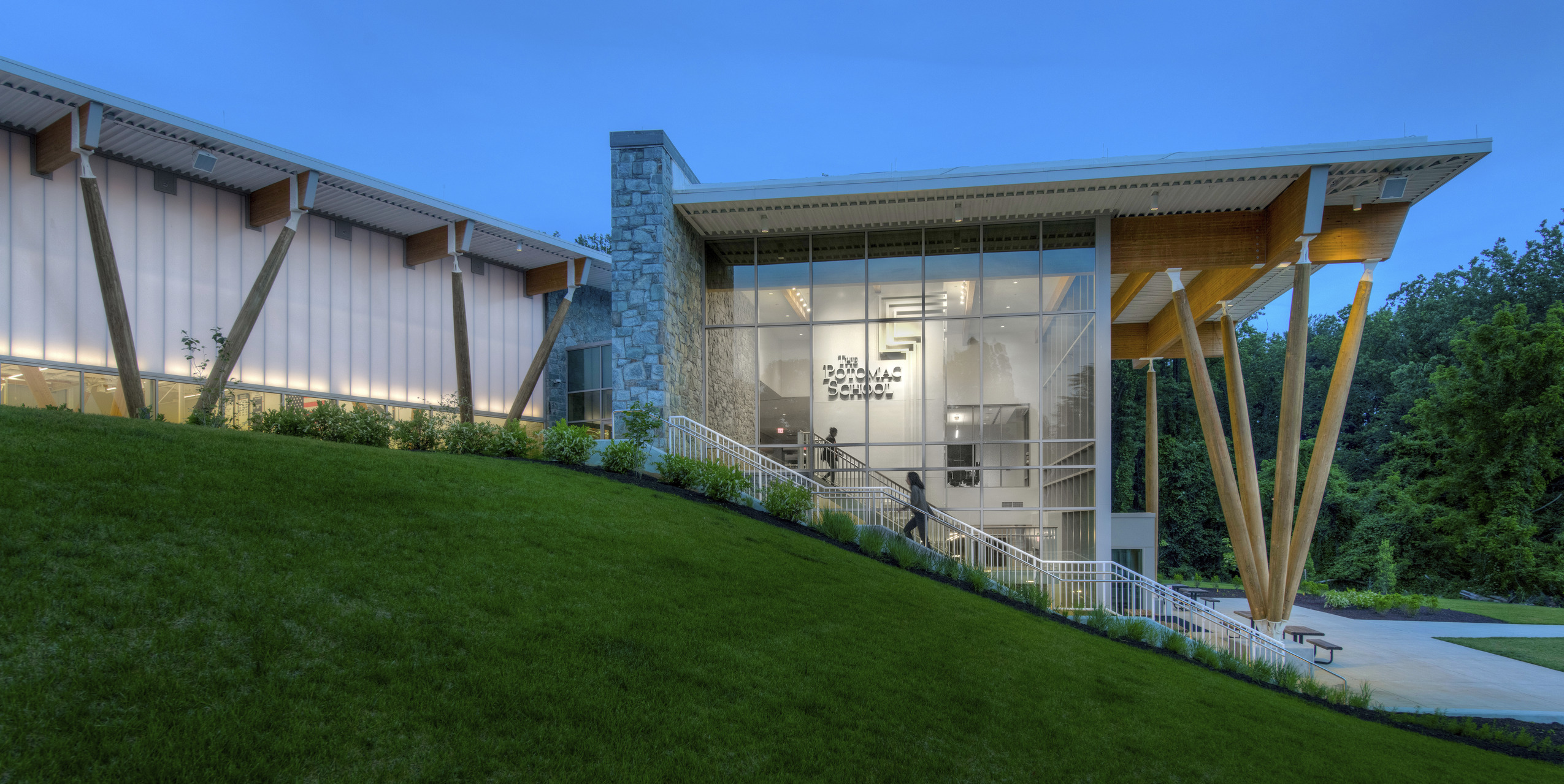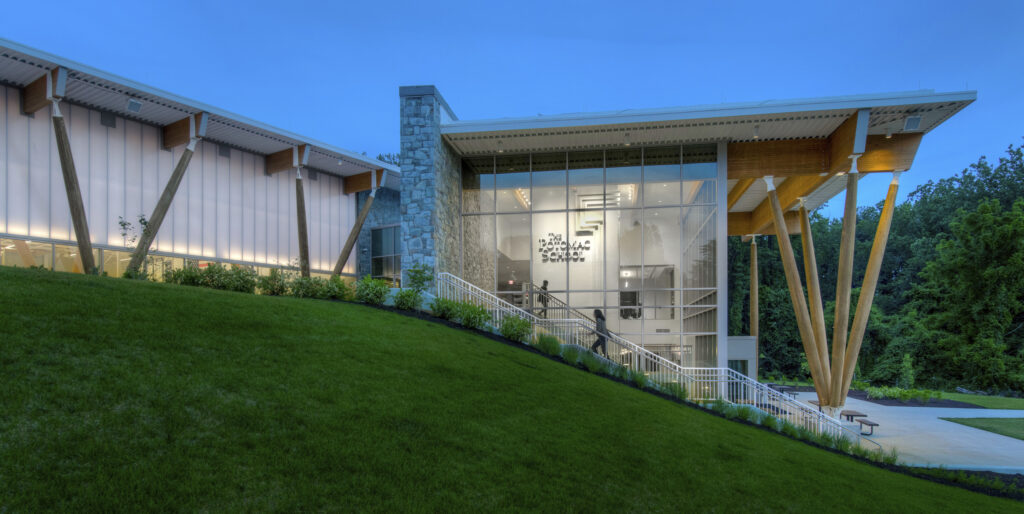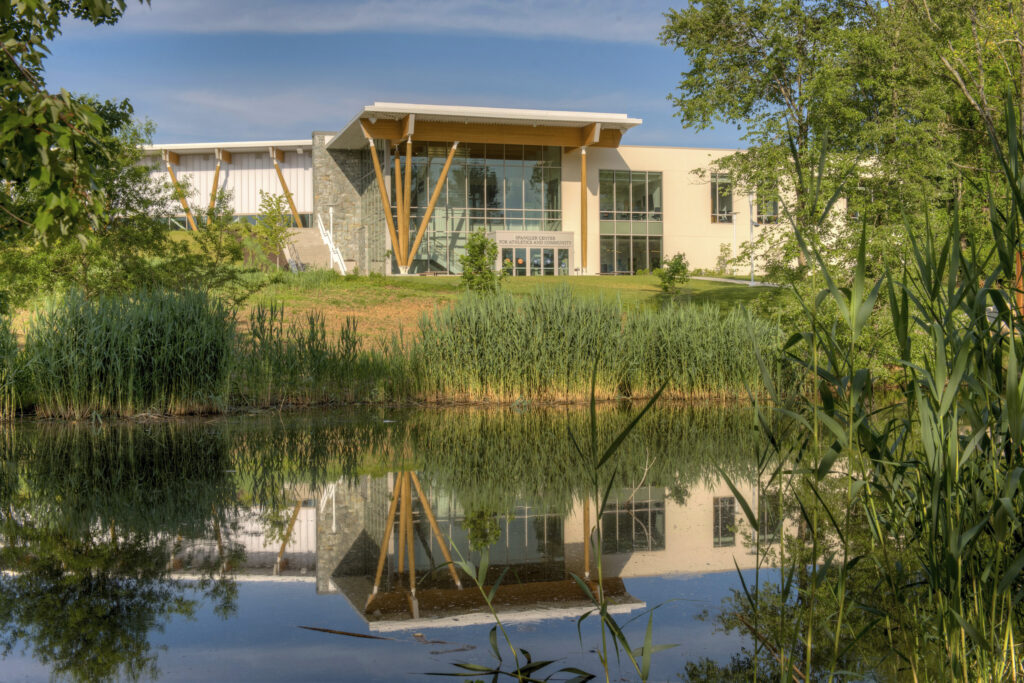
The Spangler Center for Community and Athletics is conceived as a new place on the Potomac School campus that reinforces the school’s beliefs that intellectual development, love of learning, and strength of character are complementary and essential educational goals to support an equitable community.
The project unites the school’s athletic programs as the primary location for all indoor athletic fitness and training, while providing a variety of new state-of-the-art spaces for athletic competition, learning and community gatherings. It improves the school’s ability to provide a balanced educational experience that integrates academics, athletics, and the arts within a diverse, inclusive learning community.
The concept for the facility is shaped and inspired by the program, site and culture of the school. The Center connects to the campus (often called a 90-acre classroom) by embracing the geometry of the site, nestling into the nearby hill, embracing the pond, being filled with light and bringing the outside in. It connects the Potomac community by providing intimate exterior and interior gathering spaces and larger flexible multi-purpose event spaces focused on the community’s wellbeing.

A first impression of the facility is a horizontal, glowing and integrated volume on top of the hill, with a flat roof held by structural wood “trees.” This volume is flanked by a smaller, more complex mass of glass, stucco and a stone base that steps down the hill.
A single two-story entrance is located at the southwest corner of the building. This anchors the main plaza and adjacent student plaza that step down to the adjacent nature trails. These spaces are multi-purpose and serve as outdoor academic and social space. A path extends west across a new bridge which connects to the main campus. Maintaining and protecting the pond and enhancing the bio-retention of stormwater are key environmental design attributes.

CannonDesign’s lead architect, Ken Wiseman, FAIA, was thrilled to lead the project as he shares its hometown in McLean, Virginia and the land was deeply familiar to him. “It was a space I brought my son for little-league try-outs and sometimes my daughter and I would explore the pond and beautiful scenery. She called it her magical forest,” remembers Ken. “So naturally, 20 years later when I was meeting the client and pursuing the project, I mentioned their land as a magic forest, and from there started a great partnership.”
Whether you are in the multipurpose studio “tree-house.” the strength facility or in the squash courts, each interior space is meant to promote physical activity, wellness and wellbeing of the community. The largest space in the facility is the multi-use gymnasium. While the space is a single large room it can be subdivided into three separate spaces. The multi-use gymnasium contains three practice basketball courts spanning the width of the space. Aligned with the long axis of the building is an overlaid competition basketball/volleyball court, which is flanked by retractable bleachers. The space can be subdivided and arranged to allow for day-to-day athletic practice, competition or a wide variety of community events, concerts, lectures or even robotic competitions.
Surrounding the court from the second floor is the running track. The running experience is meant to emulate running outside as you pass stunning views of nature, while still being connected to the activity indoors. The track serves other purposes too: it acts as the primary circulation corridor for event access from the upper level, it’s an overlook for major floor events, and it’s a light shelf that controls direct sun penetration to the lower level courts while simultaneously bouncing light up onto the wood structure.
The timing of the center opening in 2019, right before the COVID-19 pandemic hit, ended up being ironically what the community needed. “It made all the difference to the community that this building existed during the pandemic. It’s airy, the building allows in fresh air, so the community used this space for all kinds of events,” said Kenneth.
The client emphasized that this building promote balance and provide a lifelong learning and living space that gives back in leadership. It was about aligning the building with their values and mission. Every single classroom, in the prior building, provided access to the outside. That relationship to the site and environment was key to the building, tying in nature with the client’s DNA.
Ken Wiseman, FAIA, MRAIC, is Design Principal at CannonDesign
